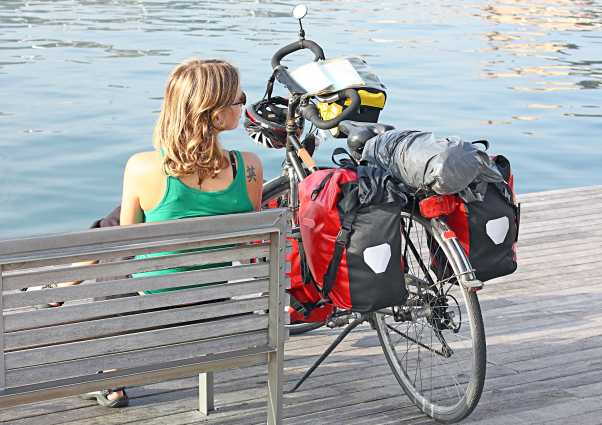
Driving in traffic is very boring. To pass the time, I often make informal studies of things in my surroundings, especially things related to driving.
There is little point in driving a car if one doesn’t give some thought to driving technique and how it compares with cycling in traffic. Most recently, I made a study of reaction times. What prompted me to choose this subject was my extreme annoyance with the drivers closest to the light who sat motionless for what seemed to be an eternity after the light turned green.
I have never understood why other drivers have so much trouble getting themselves into gear when the light turns green. Most of them have an automatic transmission, so shifting into gear is not the problem.
Even if some of them are distracted by smartphones, GPS devices or other electronics, this couldn’t possibly account for the frequency with which I have observed this phenomenon. There must be some other explanation.
Variation in reflexes probably accounts for some of the disparity. I remember our driver’s education teacher testing us on a device designed to measure how fast a driver could hit the brake in an emergency. All of the students were given multiple attempts. Most of us showed improvement with additional attempts, but still, there was a huge difference in our scores.
Some students were lightning fast while others took forever to react. In addition to natural ability, which is an obvious difference among people, there were probably unseen explanations for the degree of difference among us. I wondered then, as I wonder now whether experience and practice played a role in these differences, and if so, how much.
Since I was stuck at a light when I began this study, I decided to time the two drivers who were at the front of the line to see how they compared to one another and to compare them to the next two drivers who took their place.
The fastest driver took off in 10 seconds, which was much faster than average. The slowest driver started a full 30 seconds after the light turned green, and this was after several drivers had blown their horns to get him to move.
Unfortunately, I couldn’t see these drivers well; it would have been interesting to note any particular personal characteristics that could have accounted for their behavior — such as age or fitness level. I was forced to lump all drivers into one group, which is probably not a bad idea given the relative anonymity cars give drivers by shielding them in a box where they’re more difficult to recognize.
One interesting observation, which is probably not surprising in hindsight, was that the more stressed out I was about being late to my destination, the longer the time seemed between the light turning green and the driver in front of me moving far enough forward so that I could make it through the light before it turned red.
It was a classic case of time standing still caused by my inability to control the actions of other drivers and my frustration with obstacles standing between me and my destination. This feeling of helplessness and being enslaved to the will of others is unique to driving.
Of course, I had to repeat this experiment on my bike to see how riding compared to my experience of driving. I decided to ride the same route as I had driven to see how things looked from a cycling perspective.
I rode late enough in the day to encounter other cyclists on the road. Some of them appeared to be commuting and might have been regulars on that route.
Several times, I stopped at a light behind one or more cyclists. Unlike drivers, they usually turned their heads around, probably because they sensed or heard a bicycle pull up behind them. Most of them greeted me, which assured me that they were aware of my presence.
When the light turned green, the first cyclist in line inevitably began to roll forward. Very little time passed between the changing of the light and the initiation of movement. All of the cyclists stopped at the light began to move at roughly the same time. There was no lag other than the cyclists in the rear hanging back a bit to let those in front gain some momentum.
The cyclists’ actions were well coordinated. It was almost as if the group was moving in unison. Their reaction time and movement were very different from the slow, disjointed movement I had observed on the part of the drivers.
By way of comparison, I would say that the drivers drove independently of one another while the cyclists rode as part of something larger than themselves. Their movements were tuned to the traffic signals, the cars, and the bicycles around them. Perhaps this awareness of and coordination with their surroundings improved their reaction time.
Effectively moving out of the way of cars can be a matter of life and death for a cyclist. And, self-preservation is probably the strongest motivator when it comes to improving one’s performance. This alone could account for the superior reaction times of the cyclists.
There could be other explanations for why cyclists generally have better reaction times than drivers. Regardless of why this is true, cycling has proven itself to be much more efficient than driving. Most of a cyclist’s travel time is spent moving, not waiting. And, best of all, cycling develops an environmental cognizance, which can improve reaction times for everything, including driving.
One of these days, I’m going to set up a few formal studies to test the hypotheses I’ve developed while sitting in my car, bored out of my mind. For now, I’ll just be glad to be a cyclist most of the time and a driver some of the time.



